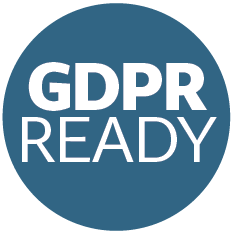In today’s digital landscape, where user experience reigns supreme and search engine algorithms are constantly evolving, web accessibility has emerged as a critical factor not only for ensuring inclusivity but also for enhancing SEO performance. Understanding the correlation between accessibility and search engine optimization (SEO) can significantly impact your website’s rankings and overall online presence.
Table of Contents
The Accessibility-SEO Nexus
Web accessibility refers to the practice of designing and developing websites that can be easily navigated and understood by all users, including those with disabilities. This encompasses various aspects such as providing alternative text for images, ensuring proper heading structure, using descriptive link text, and making sure the website is navigable with a keyboard.
On the other hand, SEO involves optimizing your website to improve its visibility and ranking in search engine results pages (SERPs). While many factors contribute to SEO success, accessibility plays a crucial role in enhancing user experience, which search engines like Google prioritize in their ranking algorithms.
Advantages of Accessible Design for SEO
- Improved User Experience: Accessible websites are more user-friendly for everyone, not just those with disabilities. This leads to lower bounce rates, longer dwell times, and increased engagement – all of which are positive signals for search engines.
- Enhanced Crawlability and Indexing: Search engine bots rely on structured and well-formatted content to crawl and index websites effectively. By adhering to accessibility guidelines, you ensure that your content is easily understood by search engine crawlers, leading to better indexation and visibility.
- Reduced Bounce Rates: When users encounter barriers such as inaccessible content or poor navigation, they are more likely to leave your site quickly (bounce). Accessibility improvements can reduce bounce rates by providing a seamless browsing experience, signaling to search engines that your website offers valuable content.
- Wider Audience Reach: Making your website accessible allows you to reach a broader audience, including individuals with disabilities who rely on assistive technologies. As your audience grows, so does the potential for increased traffic and engagement, positively impacting your SEO efforts.
Strategies for Enhancing Accessibility and SEO
- Optimize Images: Use descriptive alt text for images to ensure they are accessible to visually impaired users and improve image search optimization.
- Implement Proper Heading Structure: Organize content using headings (H1, H2, H3, etc.) to improve readability and assistive technology compatibility. This also helps search engines understand the hierarchy and relevance of your content.
- Provide Transcripts and Captions: Include transcripts for audio and video content and captions for videos to make multimedia content accessible to all users and improve keyword relevance.
- Ensure Keyboard Accessibility: Make sure your website can be navigated using a keyboard alone, as many individuals with disabilities rely on keyboard navigation. This not only improves accessibility but also enhances SEO by providing a seamless user experience.
By incorporating Meacodes Accessibility Tools into your WordPress website, you can streamline the process of making your site more accessible while simultaneously boosting its SEO performance.
In conclusion, the relationship between accessibility and SEO is undeniable. By prioritizing accessibility in your web design efforts, you not only ensure inclusivity for all users but also stand to gain significant benefits in terms of SEO rankings and user engagement. Embracing accessible design principles is not only the right thing to do ethically but also a strategic move to enhance your online visibility and competitiveness.








